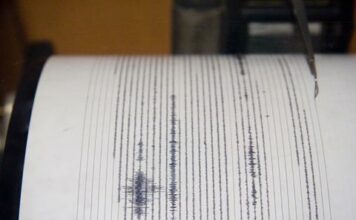Gilroy
– Earthquakes have spared Gilroy from the fatalities and scale
of damage suffered in other places, but city officials are not
relying on luck to get them through the next natural disaster.
Gilroy – Earthquakes have spared Gilroy from the fatalities and scale of damage suffered in other places, but city officials are not relying on luck to get them through the next natural disaster.
Officials on Monday will unveil their latest effort to safeguard the city against the unforeseen, when they go before City Council with an updated version of the city’s disaster mitigation plan.
The document measures the city’s ability to cope with natural disasters such as earthquakes, floods and landslides. It fits into a wider regional strategy coordinated by the Association of Bay Area Governments. The regional agency put together a checklist that covers a city’s ability to provide emergency housing, restore government services, rebuild the local economy, and repair bridges, roads and hospitals.
“The city is doing a lot of the things we should be doing,” said Community Development Director Wendie Rooney, who in the process of putting together the plan was surprised by previous officials’ foresight.
For instance, when city officials put together Hillside Management guidelines in the mid-’80s, they required homes to lie a certain distance from the hills – a safeguard against erosion, flooding, and landslides. That regulation has become an important safety guideline as the city expands and development projects such as Eagle Ridge situate themselves at the foot of the Santa Cruz Mountains.
The city also has incorporated fire control measures into its landscaping guidelines, preventing palm trees and other vegetation “that could go up with a single match,” Rooney said. “I think we’ve integrated that level of review in the planning process more than other cities.”
Planning for the worst-case scenario is nothing new in Gilroy, according to City Administrator Jay Baksa, who has been with the city for more than two decades.
“We’ve been doing disaster mitigation planning for years,” he said. “Now, the exercise itself is good, but there’s also the ramifications that if you don’t have this document, we wouldn’t be eligible for federal money when the next disaster hits. And it’s a matter of when – not if.”
The last two disasters to affect Gilroy were the 1987 flood, which “inundated everything south of 10th Street,” Baksa said, and the 1989 Loma Prieta quake.
Baksa said prior disaster-preparation plans allowed the city to receive federal assistance to repair Old City Hall following the 1989 earthquake.
Despite past efforts, Rooney acknowledged that the city still faces some major challenges in improving public safety, especially with regard to certain types of homes and buildings.
Officials are already making headway in repairing the downtown area’s biggest vulnerability – 27 unreinforced masonry buildings that could crumble and kill during an earthquake. Building owners showed little interest initially in participating in a city-funded program to determine what repairs, if any, are necessary to make the buildings safe. Nearly half the owners have decided to participate after receiving personal phone calls from Mayor Al Pinheiro. He and other City Council members may take a stronger stance with the remaining owners through an ordinance mandating upgrades by a specific date.
The next major challenge that most cities, including Gilroy, have done little about, are “soft first-story” houses or apartment buildings – wood-framed structures with tuck-under parking that are especially prone to collapse during earthquakes.
A county-wide survey in 2002 by San Jose State University found that Santa Clara County has more than 300,000 of those type of homes. As of 2002, more than a thousand Gilroyans lived in such homes.














